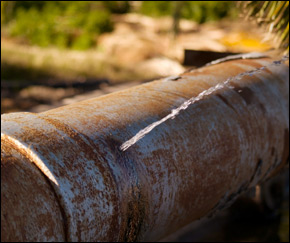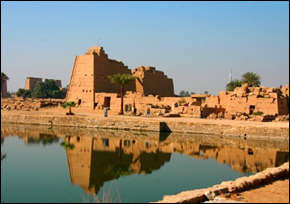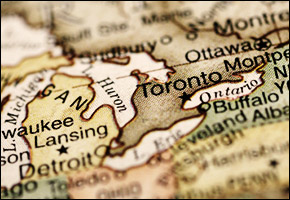Rash of Water Main Breaks Points to Vulnerability of Systems

Major water main breaks in Los Angeles and Baltimore in recent days highlight challenges to the U.S. water infrastructure system.
A rash of water main breaks in the Los Angeles water system this month have flooded streets, forced residents to evacuate, and damaged homes and businesses, the Los Angeles Times reported. One break created a sinkhole that nearly swallowed a firetruck responding to the scene, while another sent a surge of mud and water 10 feet into the air.
Since the start of September, L.A.’s Department of Water and Power has recorded 34 “major blowouts” in the city’s water system, the Los Angeles Times reported Sept. 19. By contrast, the city had only 21 such ruptures through all of September 2008, 17 in September 2007 and 13 in September 2006.
L.A. officials and water experts aren’t sure what’s causing the surge in blowouts, though potential culprits include L.A.’s aging water infrastructure, parts of which are over 100 years old, and new water rationing requirements that result in fluctuations in water pressure throughout the system.
Richard Little, director of the Keston Institute for Public Finance and Infrastructure Policy at USC, told Circle of Blue that the breaks aren’t surprising, even though the specific causes are not yet known.
“It’s what everybody in the infrastructure business has been talking about for decades; the system is getting old and is going to start breaking down,” Little said. “Is that what’s happening now? I don’t have the answer to that.”
Part of the reason that answers are elusive is that the city’s Department of Water and Power isn’t talking, he said.
“People have legitimate questions, and the people who should be answering them aren’t.”
L.A.’s water system provides some 600 million gallons of water to the city’s 3.8 million residents and businesses each day. The DWP has begun a $1.3-billion program to replace old sections of pipe.
The problems are not limited to Los Angeles.
In the Baltimore, Maryland suburb of Dundalk, a six-foot-wide water main broke in Sept. 18, submerging cars, knocking out power to hundreds of homes and flooding about 100 basements. It also raised concerns about an “infrastructure crisis,” in the words of Baltimore Department of Public Works spokesman Kurt Kocher, quoted by the Baltimore Sun.
The broken water main was installed in the 1970s and built from a now-discredited design using pre-stressed concrete, the Sun reported. Similar water mains have failed at least twice in Maryland in the past 10 months, in Bethesda and in Baltimore County’s Halethorpe community. While the type of pipe used in less than 10 percent of the 3,400 miles of the Baltimore region’s water system, it has been used in some of the largest mains, Kocher said.
Little, of the USC’s Keston Institute for Infrastructure, said the rash of leaks reflects the low value that has traditionally been placed on drinking water in the U.S., a value which leads many municipalities to let their water systems suffer major leaks for years or decades before replacing mains. That attitude may be changing in places like California, which is facing one of its worst droughts in decades.
“Given the fact that we undervalue water and underprice it, it is cheaper to lose it than to fix it,” he said. “We need to rethink those kinds of strategies. It’s a conversation that’s long overdue, and maybe this is the place to start.”
Read more here, here and here.
Sources: The Los Angeles Times, Baltimore Sun.










Leave a Reply
Want to join the discussion?Feel free to contribute!